+ Open data
Open data
- Basic information
Basic information
| Entry |  | |||||||||
|---|---|---|---|---|---|---|---|---|---|---|
| Title | Class2 of the INO80-Hexasome complex | |||||||||
 Map data Map data | Class2, INO80-Hex,Hex | |||||||||
 Sample Sample |
| |||||||||
 Keywords Keywords | Chromatin Remodeler / hexasome / DNA BINDING PROTEIN / MOTOR PROTEIN-DNA complex | |||||||||
| Function / homology |  Function and homology information Function and homology informationstructural constituent of chromatin / nucleosome / nucleosome assembly / protein heterodimerization activity / DNA binding / nucleus Similarity search - Function | |||||||||
| Biological species | ||||||||||
| Method | single particle reconstruction / cryo EM / Resolution: 3.16 Å | |||||||||
 Authors Authors | Wu H / Munoz E / Gourdet M / Cheng YF / Narlikar G | |||||||||
| Funding support |  United States, 1 items United States, 1 items
| |||||||||
 Citation Citation |  Journal: Science / Year: 2023 Journal: Science / Year: 2023Title: Reorientation of INO80 on hexasomes reveals basis for mechanistic versatility. Authors: Hao Wu / Elise N Muñoz / Laura J Hsieh / Un Seng Chio / Muryam A Gourdet / Geeta J Narlikar / Yifan Cheng /  Abstract: Unlike other chromatin remodelers, INO80 preferentially mobilizes hexasomes, which can form during transcription. Why INO80 prefers hexasomes over nucleosomes remains unclear. Here, we report ...Unlike other chromatin remodelers, INO80 preferentially mobilizes hexasomes, which can form during transcription. Why INO80 prefers hexasomes over nucleosomes remains unclear. Here, we report structures of INO80 bound to a hexasome or a nucleosome. INO80 binds the two substrates in substantially different orientations. On a hexasome, INO80 places its ATPase subunit, Ino80, at superhelical location -2 (SHL -2), in contrast to SHL -6 and SHL -7, as previously seen on nucleosomes. Our results suggest that INO80 action on hexasomes resembles action by other remodelers on nucleosomes such that Ino80 is maximally active near SHL -2. The SHL -2 position also plays a critical role for nucleosome remodeling by INO80. Overall, the mechanistic adaptations used by INO80 for preferential hexasome sliding imply that subnucleosomal particles play considerable regulatory roles. | |||||||||
| History |
|
- Structure visualization
Structure visualization
| Supplemental images |
|---|
- Downloads & links
Downloads & links
-EMDB archive
| Map data |  emd_28600.map.gz emd_28600.map.gz | 46.5 MB |  EMDB map data format EMDB map data format | |
|---|---|---|---|---|
| Header (meta data) |  emd-28600-v30.xml emd-28600-v30.xml emd-28600.xml emd-28600.xml | 22 KB 22 KB | Display Display |  EMDB header EMDB header |
| Images |  emd_28600.png emd_28600.png | 138.7 KB | ||
| Filedesc metadata |  emd-28600.cif.gz emd-28600.cif.gz | 6.3 KB | ||
| Others |  emd_28600_additional_1.map.gz emd_28600_additional_1.map.gz emd_28600_half_map_1.map.gz emd_28600_half_map_1.map.gz emd_28600_half_map_2.map.gz emd_28600_half_map_2.map.gz | 256.3 MB 40.5 MB 40.4 MB | ||
| Archive directory |  http://ftp.pdbj.org/pub/emdb/structures/EMD-28600 http://ftp.pdbj.org/pub/emdb/structures/EMD-28600 ftp://ftp.pdbj.org/pub/emdb/structures/EMD-28600 ftp://ftp.pdbj.org/pub/emdb/structures/EMD-28600 | HTTPS FTP |
-Validation report
| Summary document |  emd_28600_validation.pdf.gz emd_28600_validation.pdf.gz | 499 KB | Display |  EMDB validaton report EMDB validaton report |
|---|---|---|---|---|
| Full document |  emd_28600_full_validation.pdf.gz emd_28600_full_validation.pdf.gz | 498.5 KB | Display | |
| Data in XML |  emd_28600_validation.xml.gz emd_28600_validation.xml.gz | 17.2 KB | Display | |
| Data in CIF |  emd_28600_validation.cif.gz emd_28600_validation.cif.gz | 20.1 KB | Display | |
| Arichive directory |  https://ftp.pdbj.org/pub/emdb/validation_reports/EMD-28600 https://ftp.pdbj.org/pub/emdb/validation_reports/EMD-28600 ftp://ftp.pdbj.org/pub/emdb/validation_reports/EMD-28600 ftp://ftp.pdbj.org/pub/emdb/validation_reports/EMD-28600 | HTTPS FTP |
-Related structure data
| Related structure data | 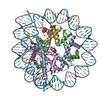 8etvMC  8etsC 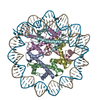 8ettC  8etuC  8etwC 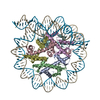 8eu2C  8eu9C 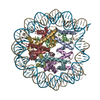 8eueC  8eufC 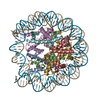 8eujC M: atomic model generated by this map C: citing same article ( |
|---|---|
| Similar structure data | Similarity search - Function & homology  F&H Search F&H Search |
- Links
Links
| EMDB pages |  EMDB (EBI/PDBe) / EMDB (EBI/PDBe) /  EMDataResource EMDataResource |
|---|---|
| Related items in Molecule of the Month |
- Map
Map
| File |  Download / File: emd_28600.map.gz / Format: CCP4 / Size: 421.9 MB / Type: IMAGE STORED AS FLOATING POINT NUMBER (4 BYTES) Download / File: emd_28600.map.gz / Format: CCP4 / Size: 421.9 MB / Type: IMAGE STORED AS FLOATING POINT NUMBER (4 BYTES) | ||||||||||||||||||||||||||||||||||||
|---|---|---|---|---|---|---|---|---|---|---|---|---|---|---|---|---|---|---|---|---|---|---|---|---|---|---|---|---|---|---|---|---|---|---|---|---|---|
| Annotation | Class2, INO80-Hex,Hex | ||||||||||||||||||||||||||||||||||||
| Projections & slices | Image control
Images are generated by Spider. | ||||||||||||||||||||||||||||||||||||
| Voxel size | X=Y=Z: 0.835 Å | ||||||||||||||||||||||||||||||||||||
| Density |
| ||||||||||||||||||||||||||||||||||||
| Symmetry | Space group: 1 | ||||||||||||||||||||||||||||||||||||
| Details | EMDB XML:
|
-Supplemental data
-Additional map: Class2, INO80-Hex,Overall
| File | emd_28600_additional_1.map | ||||||||||||
|---|---|---|---|---|---|---|---|---|---|---|---|---|---|
| Annotation | Class2, INO80-Hex,Overall | ||||||||||||
| Projections & Slices |
| ||||||||||||
| Density Histograms |
-Half map: Class2, INO80-Hex,Hex,halfmap2
| File | emd_28600_half_map_1.map | ||||||||||||
|---|---|---|---|---|---|---|---|---|---|---|---|---|---|
| Annotation | Class2, INO80-Hex,Hex,halfmap2 | ||||||||||||
| Projections & Slices |
| ||||||||||||
| Density Histograms |
-Half map: Class2, INO80-Hex,Hex,halfmap1
| File | emd_28600_half_map_2.map | ||||||||||||
|---|---|---|---|---|---|---|---|---|---|---|---|---|---|
| Annotation | Class2, INO80-Hex,Hex,halfmap1 | ||||||||||||
| Projections & Slices |
| ||||||||||||
| Density Histograms |
- Sample components
Sample components
-Entire : Class2 Hexasome in INO80-Hexasome Complex
| Entire | Name: Class2 Hexasome in INO80-Hexasome Complex |
|---|---|
| Components |
|
-Supramolecule #1: Class2 Hexasome in INO80-Hexasome Complex
| Supramolecule | Name: Class2 Hexasome in INO80-Hexasome Complex / type: complex / ID: 1 / Parent: 0 / Macromolecule list: all |
|---|---|
| Source (natural) | Organism: |
-Macromolecule #1: Histone H3.2
| Macromolecule | Name: Histone H3.2 / type: protein_or_peptide / ID: 1 / Number of copies: 2 / Enantiomer: LEVO |
|---|---|
| Source (natural) | Organism: |
| Molecular weight | Theoretical: 15.403062 KDa |
| Recombinant expression | Organism:  |
| Sequence | String: MARTKQTARK STGGKAPRKQ LATKAARKSA PATGGVKKPH RYRPGTVALR EIRRYQKSTE LLIRKLPFQR LVREIAQDFK TDLRFQSSA VMALQEASEA YLVALFEDTN LAAIHAKRVT IMPKDIQLAR RIRGERA UniProtKB: Histone H3 |
-Macromolecule #2: Histone H4
| Macromolecule | Name: Histone H4 / type: protein_or_peptide / ID: 2 / Number of copies: 2 / Enantiomer: LEVO |
|---|---|
| Source (natural) | Organism: |
| Molecular weight | Theoretical: 11.394426 KDa |
| Recombinant expression | Organism:  |
| Sequence | String: MSGRGKGGKG LGKGGAKRHR KVLRDNIQGI TKPAIRRLAR RGGVKRISGL IYEETRGVLK VFLENVIRDA VTYTEHAKRK TVTAMDVVY ALKRQGRTLY GFGG UniProtKB: Histone H4 |
-Macromolecule #3: Histone H2A type 1
| Macromolecule | Name: Histone H2A type 1 / type: protein_or_peptide / ID: 3 / Number of copies: 1 / Enantiomer: LEVO |
|---|---|
| Source (natural) | Organism: |
| Molecular weight | Theoretical: 14.109436 KDa |
| Recombinant expression | Organism:  |
| Sequence | String: MSGRGKQGGK TRAKAKTRSS RAGLQFPVGR VHRLLRKGNY AERVGAGAPV YLAAVLEYLT AEILELAGNA ARDNKKTRII PRHLQLAVR NDEELNKLLG RVTIAQGGVL PNIQSVLLPK KTESSKSAKS K UniProtKB: Histone H2A |
-Macromolecule #4: Histone H2B 1.1
| Macromolecule | Name: Histone H2B 1.1 / type: protein_or_peptide / ID: 4 / Number of copies: 1 / Enantiomer: LEVO |
|---|---|
| Source (natural) | Organism: |
| Molecular weight | Theoretical: 13.655948 KDa |
| Recombinant expression | Organism:  |
| Sequence | String: MAKSAPAPKK GSKKAVTKTQ KKDGKKRRKT RKESYAIYVY KVLKQVHPDT GISSKAMSIM NSFVNDVFER IAGEASRLAH YNKRSTITS REIQTAVRLL LPGELAKHAV SEGTKAVTKY TSAK UniProtKB: Histone H2B 1.1 |
-Macromolecule #5: DNA (110-MER)
| Macromolecule | Name: DNA (110-MER) / type: dna / ID: 5 / Number of copies: 1 / Classification: DNA |
|---|---|
| Source (natural) | Organism: synthetic construct (others) |
| Molecular weight | Theoretical: 69.840398 KDa |
| Sequence | String: (DC)(DT)(DG)(DG)(DA)(DG)(DA)(DA)(DT)(DC) (DC)(DC)(DG)(DG)(DT)(DG)(DC)(DC)(DG)(DA) (DG)(DG)(DC)(DC)(DG)(DC)(DT)(DC)(DA) (DA)(DT)(DT)(DG)(DG)(DT)(DC)(DG)(DT)(DA) (DG) (DA)(DC)(DA)(DG)(DC)(DT) ...String: (DC)(DT)(DG)(DG)(DA)(DG)(DA)(DA)(DT)(DC) (DC)(DC)(DG)(DG)(DT)(DG)(DC)(DC)(DG)(DA) (DG)(DG)(DC)(DC)(DG)(DC)(DT)(DC)(DA) (DA)(DT)(DT)(DG)(DG)(DT)(DC)(DG)(DT)(DA) (DG) (DA)(DC)(DA)(DG)(DC)(DT)(DC)(DT) (DA)(DG)(DC)(DA)(DC)(DC)(DG)(DC)(DT)(DT) (DA)(DA) (DA)(DC)(DG)(DC)(DA)(DC)(DG) (DT)(DA)(DC)(DG)(DC)(DG)(DC)(DT)(DG)(DT) (DC)(DC)(DC) (DC)(DC)(DG)(DC)(DG)(DT) (DT)(DT)(DT)(DA)(DA)(DC)(DC)(DG)(DC)(DC) (DA)(DA)(DG)(DG) (DG)(DG)(DA)(DT)(DT) (DA)(DC)(DT)(DC)(DC)(DC)(DT)(DA)(DG)(DT) (DC)(DT)(DC)(DC)(DA) (DG)(DG)(DC)(DA) (DC)(DG)(DT)(DG)(DT)(DC)(DA)(DG)(DA)(DT) (DA)(DT)(DA)(DT)(DA)(DC) (DA)(DT)(DC) (DC)(DT)(DG)(DT)(DG)(DC)(DA)(DT)(DG)(DT) (DA)(DT)(DT)(DG)(DA)(DA)(DC) (DA)(DG) (DC)(DG)(DA)(DC)(DC)(DT)(DT)(DG)(DC)(DC) (DG)(DG)(DT)(DG)(DC)(DC)(DA)(DG) (DT) (DC)(DG)(DG)(DA)(DT)(DA)(DG)(DT)(DG)(DT) (DT)(DC)(DC)(DG)(DA)(DG)(DC)(DT)(DC) (DC)(DC)(DA)(DC)(DT)(DC)(DT)(DA)(DG)(DA) (DG)(DG)(DA)(DT)(DC)(DC)(DC)(DC)(DG)(DG) (DG)(DT)(DA)(DC)(DC)(DG)(DA) |
-Macromolecule #6: DNA (110-MER)
| Macromolecule | Name: DNA (110-MER) / type: dna / ID: 6 / Number of copies: 1 / Classification: DNA |
|---|---|
| Source (natural) | Organism: synthetic construct (others) |
| Molecular weight | Theoretical: 70.34775 KDa |
| Sequence | String: (DT)(DC)(DG)(DG)(DT)(DA)(DC)(DC)(DC)(DG) (DG)(DG)(DG)(DA)(DT)(DC)(DC)(DT)(DC)(DT) (DA)(DG)(DA)(DG)(DT)(DG)(DG)(DG)(DA) (DG)(DC)(DT)(DC)(DG)(DG)(DA)(DA)(DC)(DA) (DC) (DT)(DA)(DT)(DC)(DC)(DG) ...String: (DT)(DC)(DG)(DG)(DT)(DA)(DC)(DC)(DC)(DG) (DG)(DG)(DG)(DA)(DT)(DC)(DC)(DT)(DC)(DT) (DA)(DG)(DA)(DG)(DT)(DG)(DG)(DG)(DA) (DG)(DC)(DT)(DC)(DG)(DG)(DA)(DA)(DC)(DA) (DC) (DT)(DA)(DT)(DC)(DC)(DG)(DA)(DC) (DT)(DG)(DG)(DC)(DA)(DC)(DC)(DG)(DG)(DC) (DA)(DA) (DG)(DG)(DT)(DC)(DG)(DC)(DT) (DG)(DT)(DT)(DC)(DA)(DA)(DT)(DA)(DC)(DA) (DT)(DG)(DC) (DA)(DC)(DA)(DG)(DG)(DA) (DT)(DG)(DT)(DA)(DT)(DA)(DT)(DA)(DT)(DC) (DT)(DG)(DA)(DC) (DA)(DC)(DG)(DT)(DG) (DC)(DC)(DT)(DG)(DG)(DA)(DG)(DA)(DC)(DT) (DA)(DG)(DG)(DG)(DA) (DG)(DT)(DA)(DA) (DT)(DC)(DC)(DC)(DC)(DT)(DT)(DG)(DG)(DC) (DG)(DG)(DT)(DT)(DA)(DA) (DA)(DA)(DC) (DG)(DC)(DG)(DG)(DG)(DG)(DG)(DA)(DC)(DA) (DG)(DC)(DG)(DC)(DG)(DT)(DA) (DC)(DG) (DT)(DG)(DC)(DG)(DT)(DT)(DT)(DA)(DA)(DG) (DC)(DG)(DG)(DT)(DG)(DC)(DT)(DA) (DG) (DA)(DG)(DC)(DT)(DG)(DT)(DC)(DT)(DA)(DC) (DG)(DA)(DC)(DC)(DA)(DA)(DT)(DT)(DG) (DA)(DG)(DC)(DG)(DG)(DC)(DC)(DT)(DC)(DG) (DG)(DC)(DA)(DC)(DC)(DG)(DG)(DG)(DA)(DT) (DT)(DC)(DT)(DC)(DC)(DA)(DG) |
-Experimental details
-Structure determination
| Method | cryo EM |
|---|---|
 Processing Processing | single particle reconstruction |
| Aggregation state | cell |
- Sample preparation
Sample preparation
| Buffer | pH: 7.5 |
|---|---|
| Vitrification | Cryogen name: OTHER |
- Electron microscopy
Electron microscopy
| Microscope | FEI TITAN KRIOS |
|---|---|
| Image recording | Film or detector model: GATAN K3 (6k x 4k) / Average electron dose: 67.0 e/Å2 |
| Electron beam | Acceleration voltage: 300 kV / Electron source:  FIELD EMISSION GUN FIELD EMISSION GUN |
| Electron optics | Illumination mode: SPOT SCAN / Imaging mode: BRIGHT FIELD / Nominal defocus max: 2.0 µm / Nominal defocus min: 1.0 µm |
| Experimental equipment |  Model: Titan Krios / Image courtesy: FEI Company |
- Image processing
Image processing
| Startup model | Type of model: OTHER |
|---|---|
| Final reconstruction | Resolution.type: BY AUTHOR / Resolution: 3.16 Å / Resolution method: FSC 0.143 CUT-OFF / Number images used: 130147 |
| Initial angle assignment | Type: ANGULAR RECONSTITUTION |
| Final angle assignment | Type: ANGULAR RECONSTITUTION |
 Movie
Movie Controller
Controller















 Z (Sec.)
Z (Sec.) Y (Row.)
Y (Row.) X (Col.)
X (Col.)












































